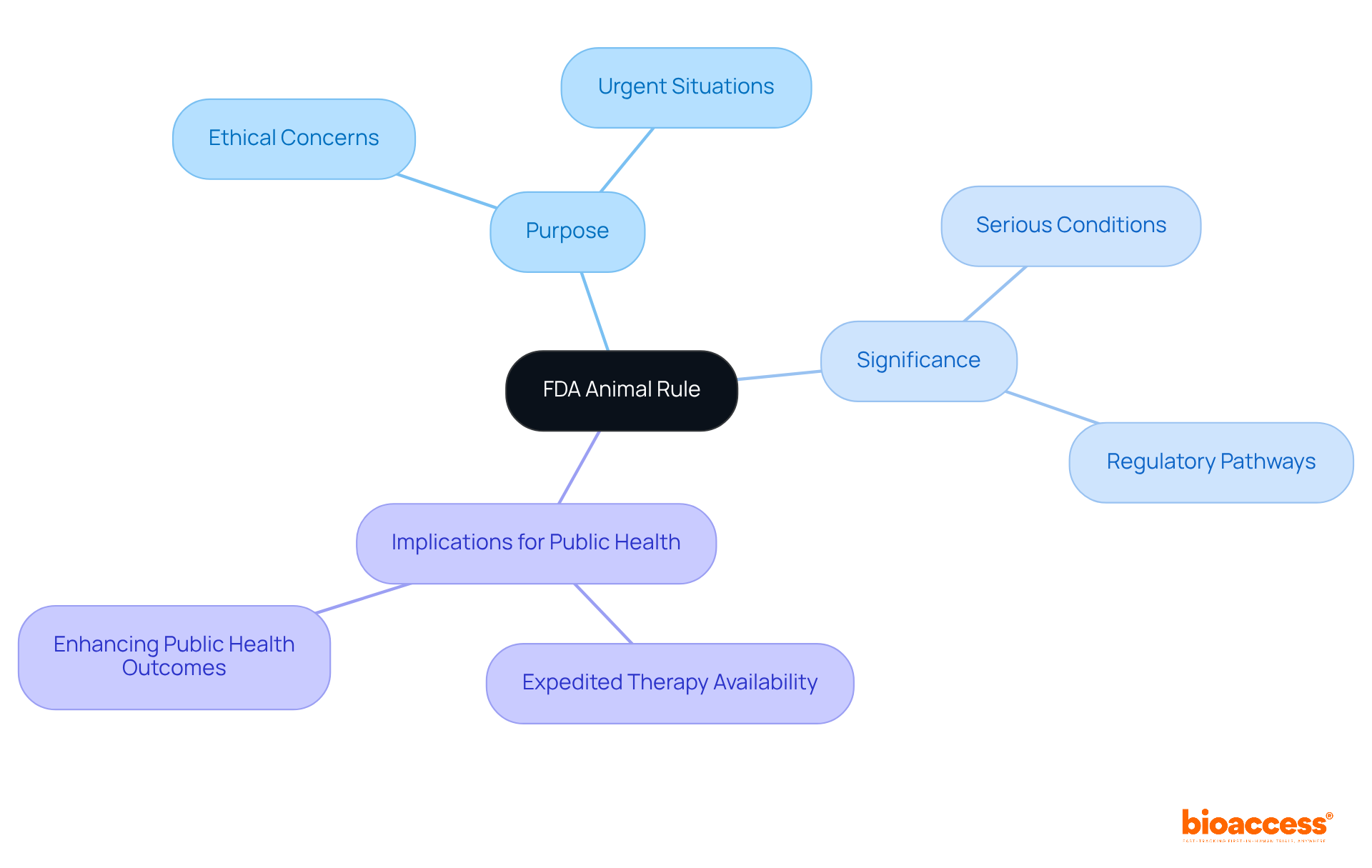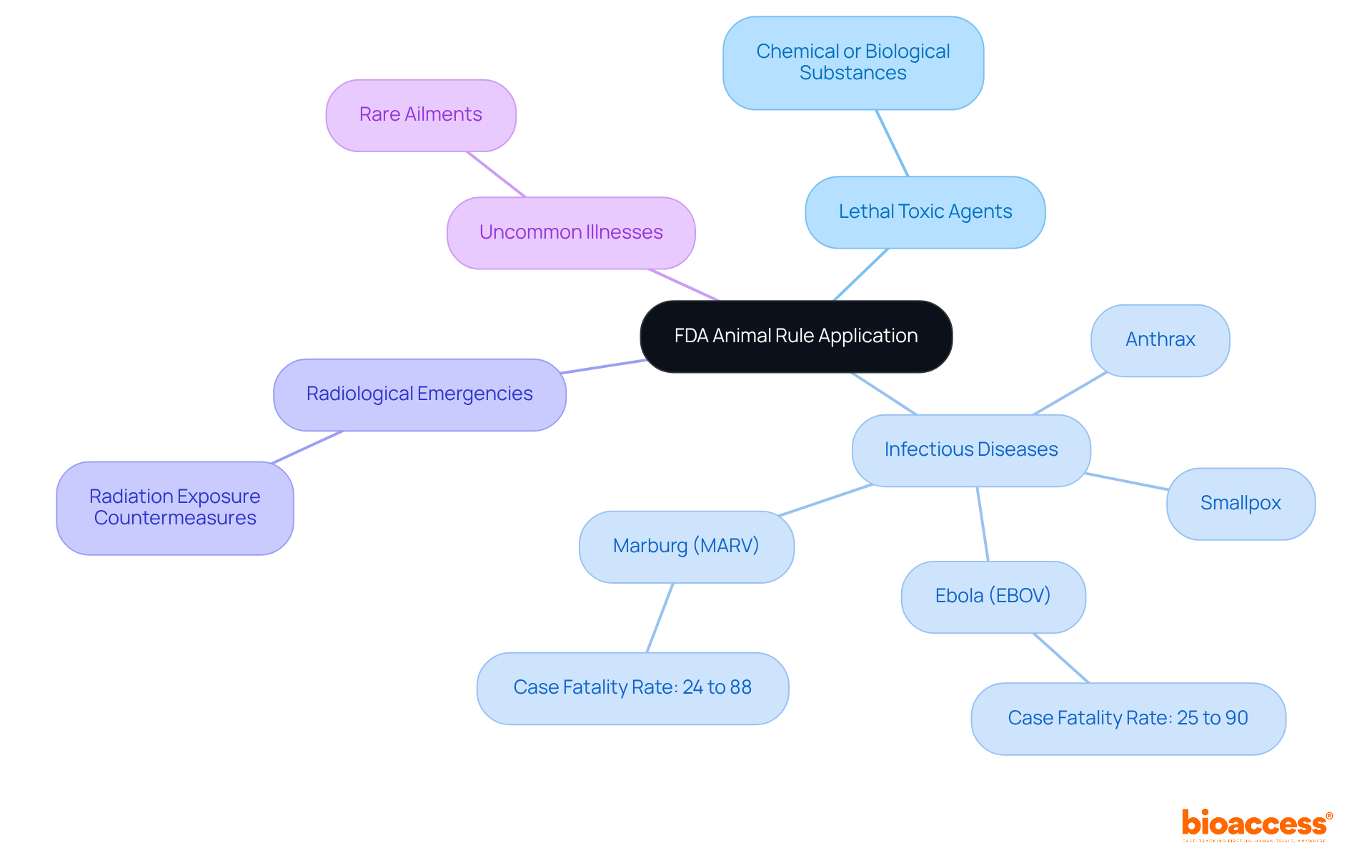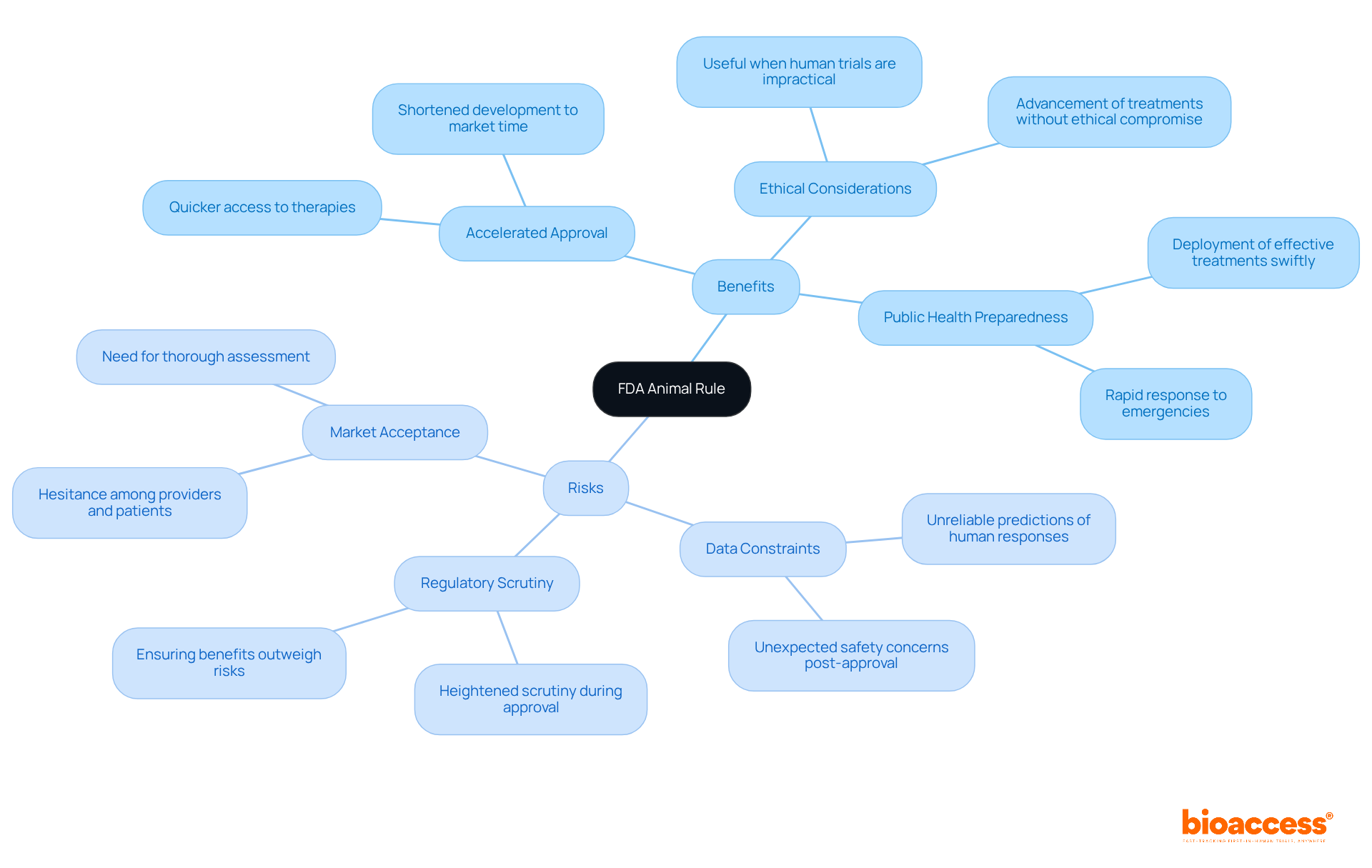


The FDA Animal Rule serves as a crucial framework in clinical research, especially when human trials face ethical dilemmas or logistical hurdles. This regulation streamlines the development of vital therapies against serious health threats, while simultaneously raising important questions about the balance between innovation and safety. As clinical research directors navigate the complexities of this rule, grasping its applications, benefits, and inherent risks is essential for ensuring the swift delivery of life-saving treatments.
How can researchers effectively leverage the FDA Animal Rule while addressing the ethical and scientific challenges it presents? This inquiry not only highlights the necessity of understanding the rule but also prompts researchers to reflect on their own practices in the field. By engaging with this framework, they can better navigate the intricate landscape of clinical research, ultimately leading to more effective and timely therapeutic solutions.
The FDA Animal Rule, officially referred to as the Efficacy Regulation for Animals, is crucial in the approval process for medications and biological products. It allows for the use of well-regulated studies involving animals when human trials are deemed unethical or impractical, in accordance with the FDA Animal Rule. This regulation is particularly significant for products aimed at treating serious or life-threatening conditions, including those arising from chemical, biological, radiological, or nuclear threats.
The guideline's primary objective is to facilitate the development of therapies that can be deployed in urgent situations where human trials cannot be conducted due to ethical concerns. The FDA seeks to expedite the availability of effective therapies in the market by establishing a regulatory pathway that utilizes the FDA Animal Rule based on animal data. This approach not only enhances public health outcomes but also underscores the importance of timely access to critical medical interventions.

The fda animal rule plays a crucial role in various critical scenarios that demand immediate attention in clinical research.
Understanding these scenarios empowers clinical research directors to strategically plan their research and regulatory submissions, ensuring compliance with the FDA animal rule while addressing pressing health needs. Furthermore, the approval of the BioThrax anthrax vaccine as the first vaccine authorized under the Veterinary Guidelines exemplifies its practical application in tackling public health challenges. Expert insights, including those from Courtney L. Finch, emphasize that the FDA animal rule permits the authorization of candidate vaccines and therapeutics based on animal survival data when human efficacy studies are not feasible or ethical.

The FDA Animal Rule offers several significant advantages that are crucial for clinical research management:
However, the Animal Rule also presents notable risks:
Navigating the balance between these benefits and risks is essential for effective clinical research management, particularly in developing medical countermeasures for high-stakes scenarios.

Compliance with the FDA animal rule is essential for ensuring the integrity and efficacy of clinical research. It necessitates adherence to several fundamental requirements:
Research Design: Investigations must be meticulously crafted to demonstrate efficacy in the chosen animal model, strictly following good laboratory practices (GLP). This approach guarantees that results are trustworthy and relevant to societal contexts.
Data Integrity: Accurate collection and reporting of all data are crucial. Prioritizing transparency and reproducibility upholds the integrity of research results, as discrepancies can undermine the validity of the investigation.
Postmarketing Research: Products authorized under the Veterinary Regulation may be subject to postmarketing research aimed at confirming effectiveness and safety in human groups. These analyses are vital for the continuous evaluation of a product's performance once it enters the market.
Ethics Review: All research involving non-human subjects must undergo review and approval by Institutional Animal Care and Use Committees (IACUC). This process ensures that ethical standards are maintained in the treatment of animals involved in research.
In addition to these compliance measures, comprehensive clinical trial management services, such as those provided by Bioaccess, play a crucial role in navigating the regulatory landscape. These services encompass feasibility studies, site selection, compliance reviews, trial setup, import permits, nationalization of investigational devices, project management, and reporting. Katherine Ruiz, an expert in regulatory affairs for medical devices and in vitro diagnostics in Colombia, ensures that all aspects of the trial adhere to regulatory standards.
Adhering to these compliance measures is vital for successfully navigating the regulatory landscape associated with the FDA animal rule. This ultimately facilitates the advancement of medical innovations, underscoring the importance of collaboration and the next steps in this critical process.

The FDA Animal Rule stands as a crucial regulatory framework that streamlines the development and approval of medical therapies when human trials are impractical. By permitting the use of animal data instead of human studies, this rule effectively addresses urgent health needs, particularly for serious or life-threatening conditions. It highlights the necessity of ethical considerations while ensuring that effective treatments can be swiftly made available to the public.
Key insights throughout the article reveal various scenarios where the Animal Rule can be applied, including:
The advantages of this pathway, such as accelerated approval and improved public health preparedness, are weighed against potential risks like data limitations and regulatory scrutiny. Moreover, adherence to rigorous research design and ethical standards is vital for upholding the integrity of studies conducted under this rule.
Ultimately, the importance of the FDA Animal Rule cannot be overstated. It not only facilitates timely access to essential medical interventions but also underscores the need for responsible research practices. As clinical research directors navigate the complexities of this regulatory landscape, a steadfast commitment to ethical standards and thorough compliance will be essential in advancing medical innovations that can save lives and safeguard public health.
What is the FDA Animal Rule?
The FDA Animal Rule, officially known as the Efficacy Regulation for Animals, is a regulation that allows the use of well-regulated studies involving animals in the approval process for medications and biological products when human trials are deemed unethical or impractical.
What is the purpose of the FDA Animal Rule?
The primary purpose of the FDA Animal Rule is to facilitate the development of therapies for serious or life-threatening conditions, especially in situations where human trials cannot be conducted due to ethical concerns.
In what situations is the FDA Animal Rule particularly significant?
The FDA Animal Rule is particularly significant for products aimed at treating serious or life-threatening conditions, including those arising from chemical, biological, radiological, or nuclear threats.
How does the FDA Animal Rule impact public health?
By establishing a regulatory pathway that utilizes animal data, the FDA Animal Rule enhances public health outcomes and ensures timely access to critical medical interventions in urgent situations.